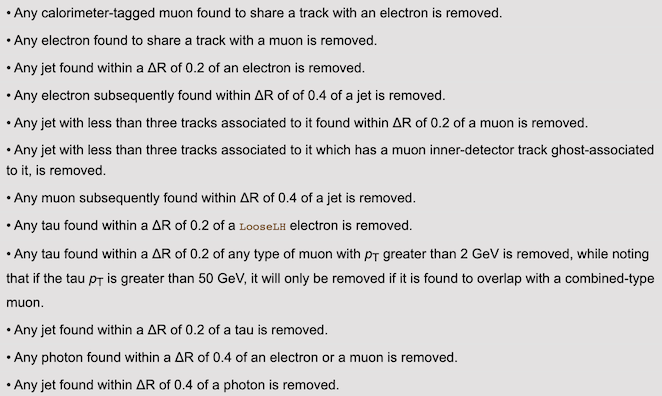In ATLAS, the various object collections are reconstructed in separate steps using the same detector information. This means that if, e.g., the electron reconstruction algorithm changes, electrons can be re-reconstructed without needing to change how jets are reconstructed. The downside to this approach is that the different object reconstruction algorithms do not take into account what detector signals are used to build other objects. In other words, the same energy deposited in a region of the calorimeters could be reconstructed as an electron or photon, a hadronic jet, and a tau lepton at the same time!
This ambiguity in object reconstruction is problematic for analyses. It can easily lead to counting the same energy deposits multiple times, resulting in nonsensical results.
This is not a problem within a individual object collection. Each object reconstruction algorithm is designed to exclusively assign energy deposits to exactly one object.
ATLAS analyses use a procedure of Overlap Removal (OLR or OR) to resolve this issue. The OLR procedure compares two types of objects at a time and if there is geometric overlap (defined using ΔR matching, ghost-association, or association to the same ID track), one object or the other is removed, depending on a pre-defined priority. Each pair of containers is compared sequentially, resulting in a complete set of objects without any ambiguity. A standard OLR order and priority list is defined as:

but it is also possible for other orders/priorities to be defined. This is typically done by analyses that depend heavily on final states with a particular type of particle, such as photons.
More details about the OLR procedure and recommendations can be found on the Overlap Removal twiki page.